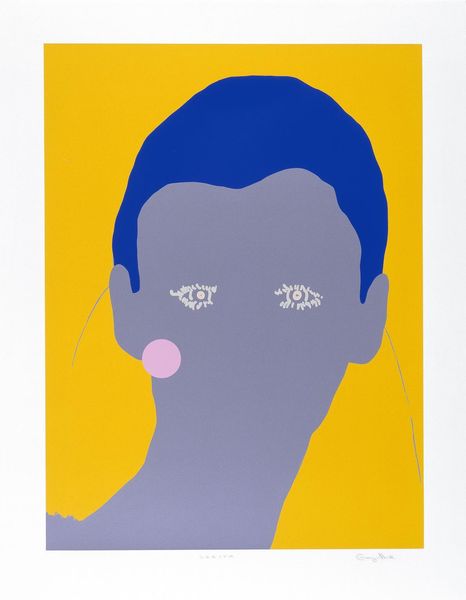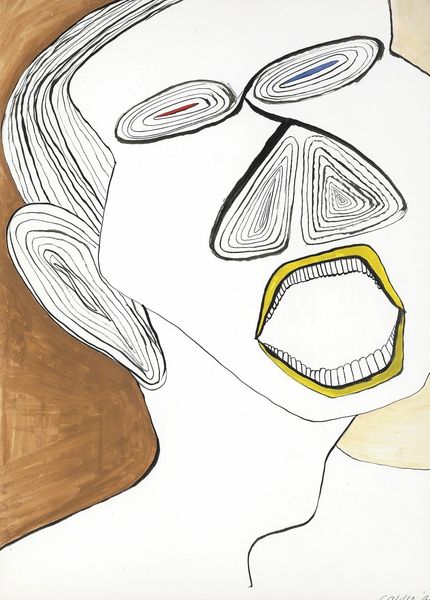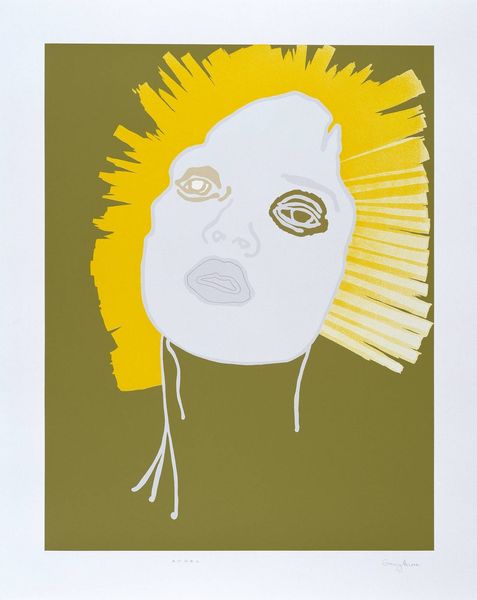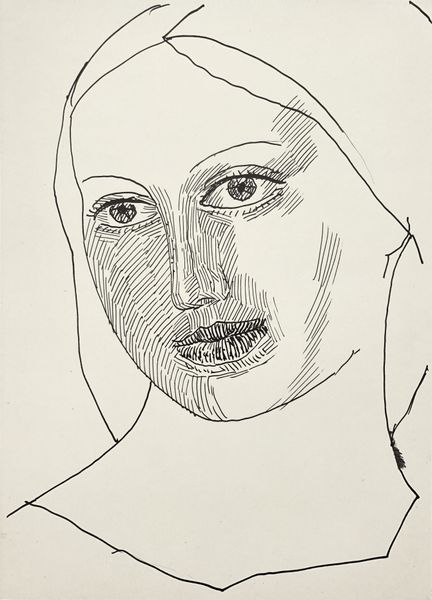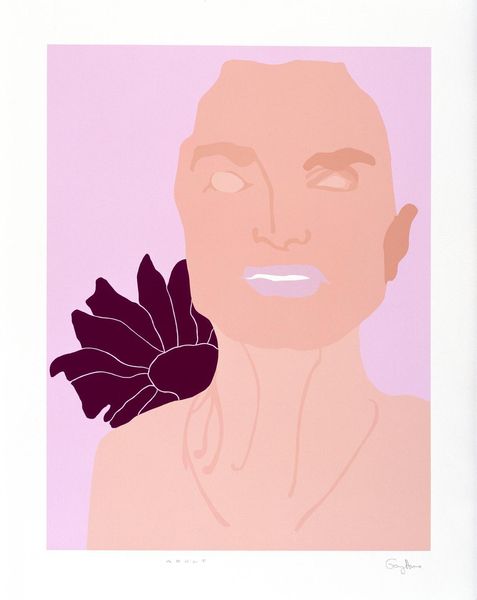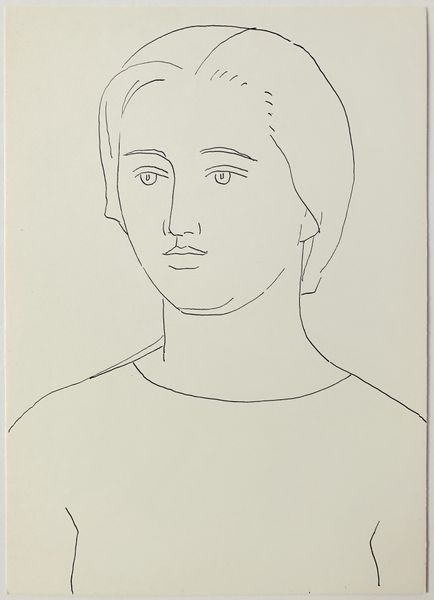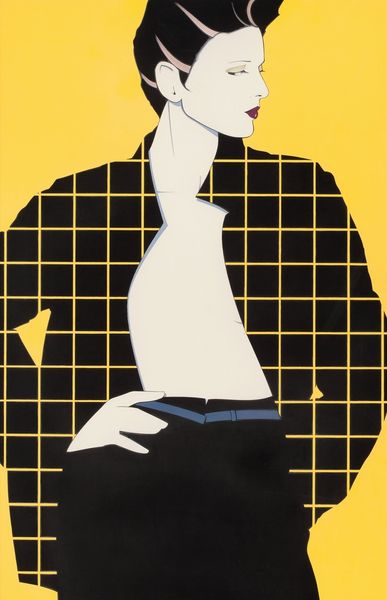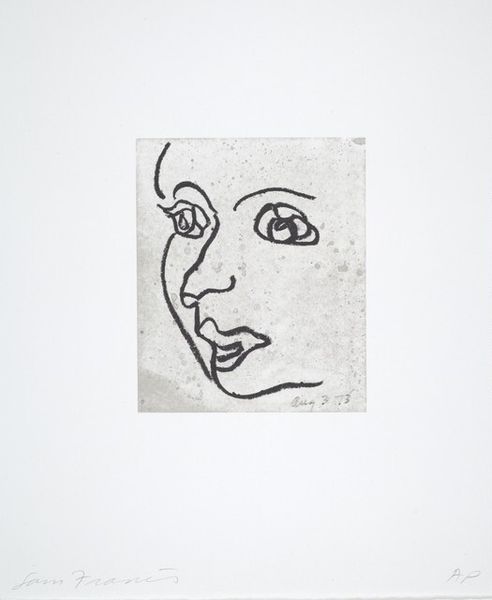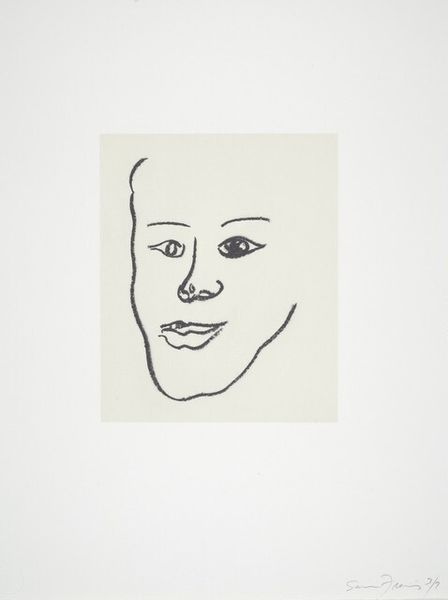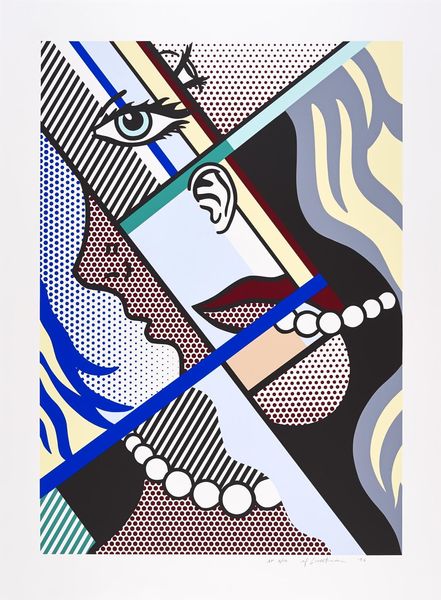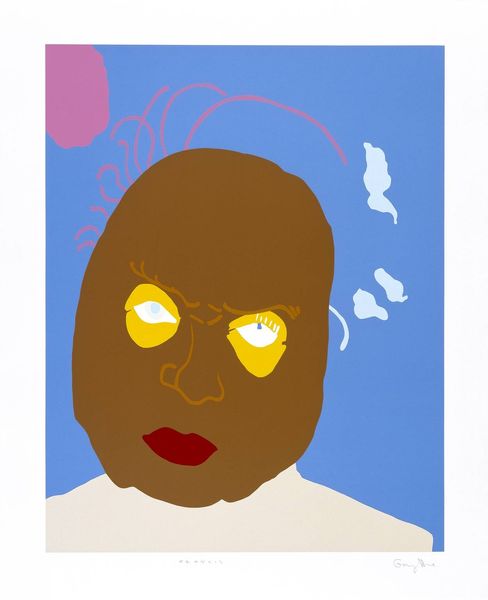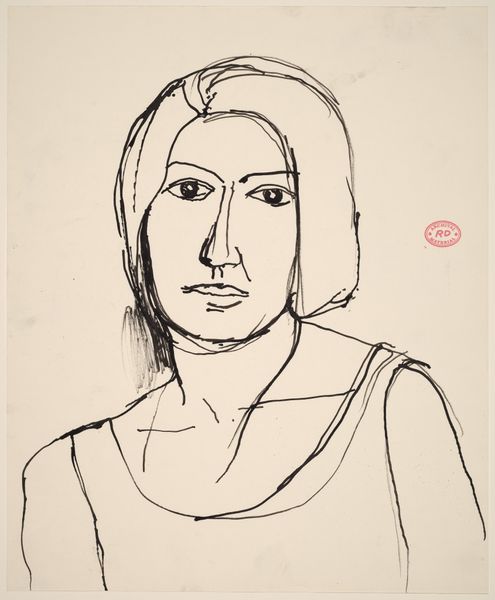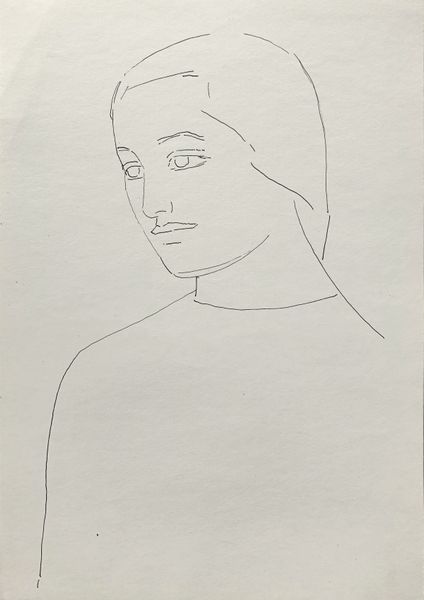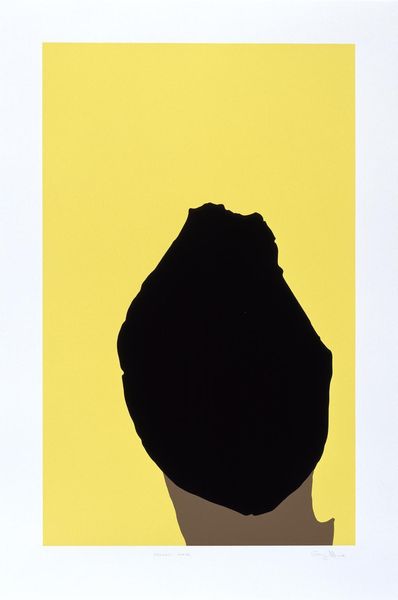
Dimensions: image: 907 x 687 mm
Copyright: © Gary Hume | CC-BY-NC-ND 4.0 DEED, Photo: Tate
Curator: Oh, my! It’s as if sunshine fell through a sieve and landed on a face. There is something so playfully unsettling about it. Editor: This is "Poor Thing" by Gary Hume. Hume was born in 1962 and is known for his use of high-gloss paint and simplified forms, often referencing everyday imagery. The title adds another layer to the picture. What kind of critique does that evoke? Curator: It's that flattening, isn’t it? Like the subject has been ironed out, pressed into a singular, almost cartoonish identity. It makes me wonder about the gaze, who is doing the seeing, and with what prejudice? Editor: Precisely. Hume’s work often dances on the edge of representation and abstraction, inviting viewers to question the narratives we project onto others, especially onto women. Curator: Yes, it almost feels like a comment on celebrity culture, the way we reduce people to these shiny, two-dimensional icons. It’s…uncomfortable. Editor: And deliberately so, I think. Hume uses beauty to lure us in, then challenges us to confront the uglier realities of societal perception. Curator: Well, it's certainly got me thinking. It's a piece that keeps revealing new layers with each look. Editor: Absolutely, Gary Hume gives us a space to ponder how appearances conceal and reveal.
Comments
Join the conversation
Join millions of artists and users on Artera today and experience the ultimate creative platform.
tate 6 months ago
⋮
Hume’s Portraits is a series of ten screenprints commissioned by Charles Booth-Clibborn and published by him under his imprint, The Paragon Press, London. They were proofed and printed at Coriander Studio, London in an edition of thirty-six plus ten artist’s proofs. Tate’s copy is number eighteen in the edition. Each print was made using between three and fifteen colours and coated with several layers of varnish in sections. The varnish results in a sheer, glossy surface similar to that achieved by Hume’s use of household gloss paint in his paintings such as Incubus 1991 (Tate T07184) and Water Painting 1999 (Tate T07618). The prints are based on paintings Hume made between 1994 and 1998. Some of these paintings were derived from photographs, others from Hume’s imagination. Each print has a subtitle related to the original painting. This is the sixth image and its subtitle is Poor Thing. It is based on a larger painting of the same title (1994, private collection, New York) in gloss paint on aluminium panel. Like Angel and Young Woman (Tate P78682 and P78683), other images in the series, Poor Thing is a portrait of a damaged or unhappy person whose distress is symbolically expressed by uneven eyes and, in this instance, confirmed by the title. Poor Thing is an imaginary figure in a predominantly yellow image. The subject’s face and neck are a flat area of beige surrounded by a yellow top, yellow hair and a background made up of areas of several tones of yellow. Eyes, eyebrows and nose are also flat yellow areas. Only one eye has a brown pupil. The thin lips of its unevenly shaped mouth are pink. Large black letters, I, N, F and C (which could be patterning on the subject’s top), appear along the bottom of the image, spreading over the subject’s shoulders. A pale pink blob hanging below the ear suggests an earring. Unlike Young Woman, Poor Thing has no hint of fashion.
